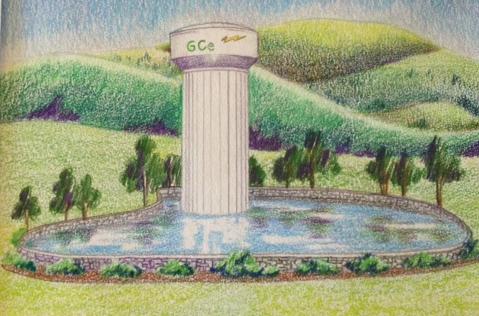Green Clean Electricity, Inc.
Our Vision
Green Clean Electricity has developed a new concept in electrical power production that gives the world a pathway to have a continuous, economical, and environmentally friendly process.

Our vision is simple: Start with an elevated water supply in a dam or water tower 100 to 200 ft. above a small lake. Direct the outflow from the water tower into a pipe which goes 200 to 400 ft. below the level of the lake. As the water falls down the pipe, air is added. The weight of the falling water compresses the air until at the bottom of the pipe, the water and air mixture are separated into water and compressed air. The water is returned up a pipe to the surface of the lake. The compressed air is collected in a separate tank. The water in the lake can now be pumped up to the starting level using the compressed air collected from the first loop of the process. If the process is run by very specific parameters, it produces enough compressed air to pump more water than is needed to keep the process operating. Excess pumped water is used to generate electricity by standard methods used today for hydropower plants when water is returned from the tower to the lake below the water tower.
Skeptics say the process defies the third law of physics, but an energy balance using specific operating conditions shows the process to be ~30% efficient to produce electricity.
We have modeled the process and can show how it works in delivering continuous clean power using only water and air.
The best part of the process is that once the initial cost to build the process is paid back, the process cost is virtually zero. Just provide a make-up water supply and the process will run itself. The Ragged Chute Plant in Colbalt, Canada compressed air as a water hydraulic process that operated for over 50 years with minimal problems.
The best reason to support development of this process is that it is environmentally safe. There is no greenhouse gas pollution with this unlimited power process. There is no long term waste problem as there is with nuclear. The process can be used with salt or river water.
Copyright this business. All rights reserved.
If using email through outlook express click below otherwise paste email address onto your email page send box will@greencleanelectricity.com